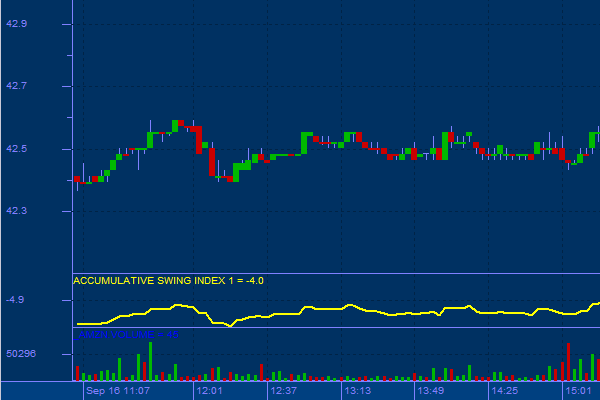
The Aroon indicator was developed by Tushar Chande in 1995. It is a trend indicator – used to determine if the security is moving in a trend or sideways, as well as how strong the trend is. If the price of a security is rising, the Close for the period will be closer to the end of the period, and vice versa. The Aroon indicator shows how much time passed between the highest (up) or lowest (down) Close since the beginning of a period (in percents).
Aroon indicator consists of two lines – Aroon(up) and Aroon(down), and the resulting Aroon Oscillator is the difference between them. . It oscillates between 0 and 100.
AroonUp for a given time period is calculated by determining how much time (on a percentage basis) elapsed between the start of the time period and the point at which the highest closing price during that time period occurred. AroonUp will be 100 when the instrument is setting new highs for the period. Conversely, AroonUp will be 0 if the instrument has continually dropped throughout the period. AroonDown is calculated in a similar manner, expect looking for lows as opposed to highs.
Usage:
Aroon is used to measure the presence and strength of trends. When Aroon(up) and Aroon(down) are moving together, there is no clear trend (the price is moving sideways, or about to move sideways).
When the Aroon(up) is below 50, it is an indication that the uptrend is losing its momentum, while when the Aroon(down) is below 50, it is an indication that the downtrend is losing its momentum.
When the Aroon(up) or Aroon(down) are above 70, it indicate a strong trend in the same direction, while when the value is below 30, it indicates a trend coming in an opposite direction.
Finally, for the Aroon Oscillator, the positive value indicates an upward trend (or coming trend), and the negative value indicates a downward trend. The higher the absolute value of an oscillator, the stronger is an indication of a trend.

